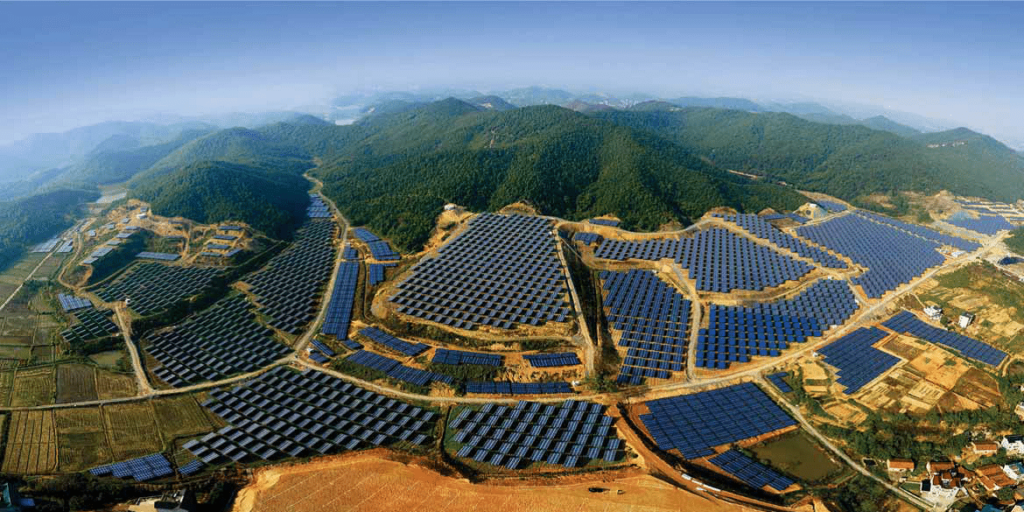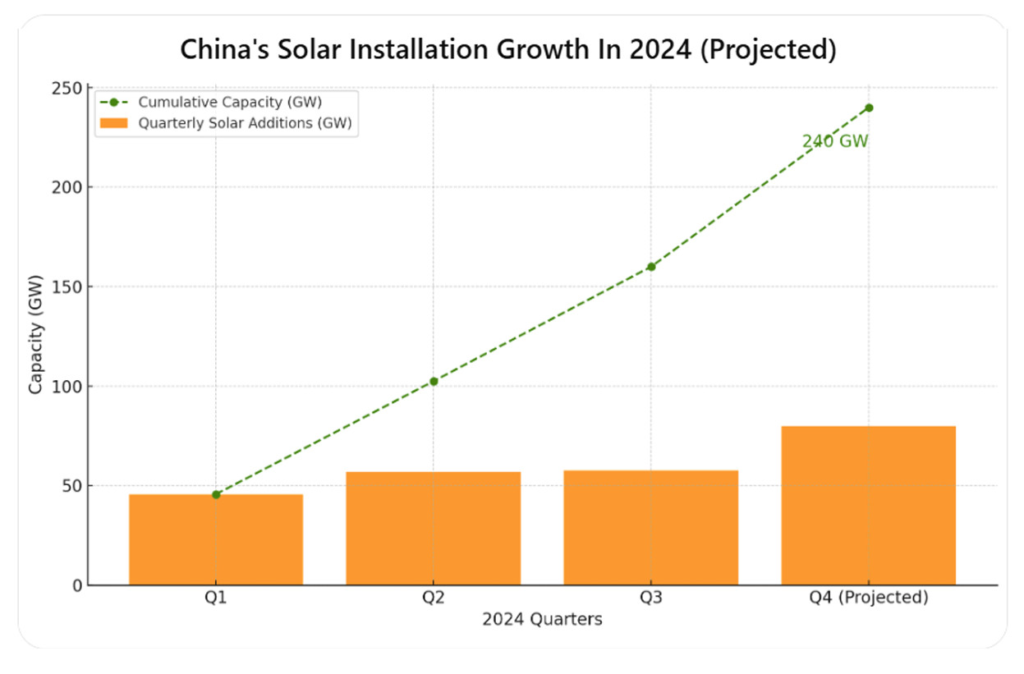
China’s renewable energy growth in 2024 has been nothing short of historic. In just the first three quarters of the year, China installed 160 GW of new solar capacity, averaging 17.7 GW per month. With the fourth quarter typically the strongest for energy deployments, total new solar installations are projected to exceed 240 GW by year-end. This remarkable feat will push China’s cumulative solar capacity past 1 terawatt (1 TW), a world-first milestone that cements its leadership in clean energy.
A Historic Milestone in Solar Energy
China’s solar expansion isn’t just impressive in scale—it’s transformational. For context, 1 TW of solar capacity is more than the entire solar infrastructure of most developed nations combined. This growth underscores China’s ability to implement large-scale projects with unprecedented speed and efficiency. New solar capacity added in 2024 alone will exceed the total installed solar capacity of the United States, demonstrating China’s unparalleled momentum in the renewable energy sector.
Coal Approvals Plummet by 83%
This surge in renewables coincides with a sharp decline in new coal approvals. In 2024, China approved only 9 GW of new coal power capacity, an 83% drop compared to 2023. This reduction reflects a strategic shift as solar, wind, and battery energy storage systems (BESS) increasingly meet the country’s growing energy demands. While coal still accounts for a significant portion of China’s energy mix, its role is rapidly diminishing, with plants operating primarily as backup or peaker facilities.
Wind and Battery Storage as Key Enablers
Solar is only one piece of China’s renewable energy puzzle. Wind power—both onshore and offshore—continues to grow, complementing solar by generating energy during times when sunlight is unavailable. Meanwhile, the rapid deployment of BESS ensures grid stability and maximizes the efficiency of renewable energy output.
Battery storage is particularly critical in smoothing out the intermittency of solar and wind. As BESS costs continue to decline—falling nearly 30% in the last two years alone—China’s ability to integrate renewables into its grid becomes increasingly seamless. With record-breaking solar installations in 2024, the demand for BESS is expected to surge, driving even more projects to come online at an accelerated pace. Large-scale projects, like grid-scale lithium-ion and experimental liquid-metal batteries, are setting new benchmarks for energy storage worldwide.
The Broader Implications
China’s renewable energy achievements set a powerful example for the rest of the world. By scaling solar, wind, and storage at record speeds, the country is demonstrating that transitioning away from fossil fuels is not only feasible but also economically advantageous. Renewable energy projects are now more cost-effective than coal and nuclear power, and their scalability ensures energy security in the long term.
This rapid transition also has significant implications for global carbon emissions. As the world’s largest energy consumer and emitter, China’s pivot toward renewables represents a major step in global efforts to combat climate change.
A New Energy Era
China’s achievements in 2024 mark the dawn of a new era in energy. Smashing its 2030 renewable energy targets six years early, the country is reshaping the global energy landscape and setting a precedent for what is possible with the right mix of policy, innovation, and ambition. By leading the way in renewable energy, China is proving that a future powered by clean, abundant, and affordable energy isn’t just an aspiration—it’s a reality.
As we look ahead, one thing is clear: the renewable energy revolution is here, and China is at its forefront.


